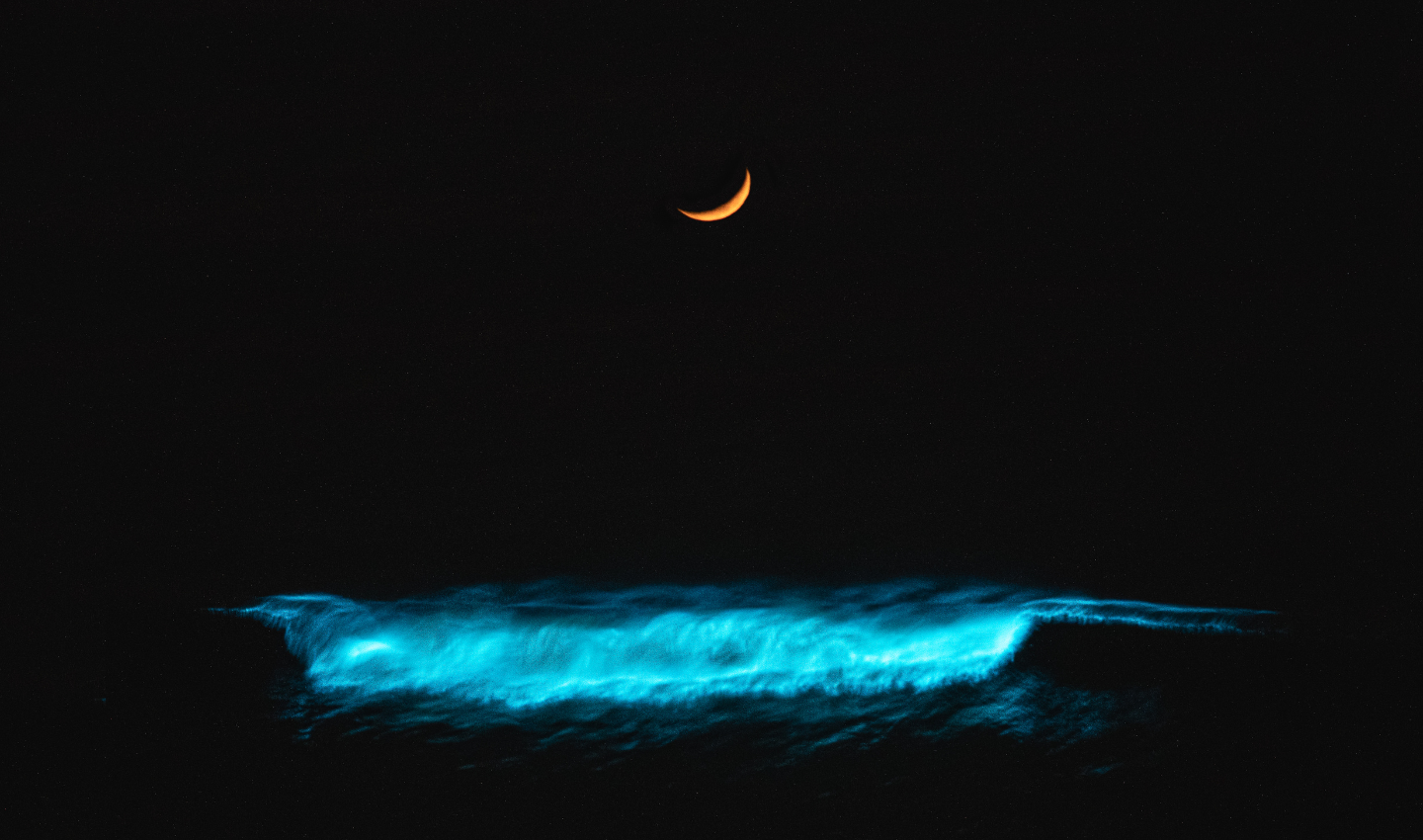- Marine Life Facts
- Science: Explained
Interesting animals that use bioluminescence in the deep Ocean.

Bioluminescence: Lighting up a lightless world.
While bioluminescence is everywhere throughout our Ocean, it’s the only source of light in the deep-sea.
A staggering 76% of all Oceanic marine animals are capable of bioluminescence, which means that they can produce their own light through chemical reactions inside their body.
How does bioluminescence work in the deep Ocean?
Bioluminescence is a chemical reaction that occurs when the light-emitting molecule called luciferin reacts with a luciferase enzyme, releasing energy in the form of light.

It’s an active process, meaning it can be turned on/off, as opposed to the passive traits of fluorescence and phosphorescence.
Some bioluminescent organisms generate their own light. Others take up bioluminescent bacteria from the water column and house it in their light organs in a symbiotic relationship.
Marine bioluminescence is commonly expressed as blue/green light. This is most likely because these wavelengths travel further distances through the water. They’re more also easily visible in the deep Ocean.
In rarer cases, red and yellow bioluminescence have also been observed in marine creatures.
Why do marine animals emit light at all?
In the lightless world of the deep Ocean, marine creatures have adapted to use bioluminescence to their advantage:
1. Deep-sea anglerfish have a specialised lure to attract prey.
Perhaps the most famous bioluminescent predator is the deep-sea anglerfish.
This ferocious hunter has a large head, incredibly sharp teeth and a long, fishing-rod-like structure that extends out from the top of its head. At the end of this rod is a ball (called the esca) which contains glowing bacteria called Photobacterium. Ringing any bells? You may recognise her from Finding Nemo.
This lure is used to attract curious prey and is also useful for finding a mate in the vast, dark expanse of the deep Ocean.
2. Vampire squid expel bioluminescent mucus to deter predators.
When threatened, the vampire squid inverts its body, raising its arms over its head to expose rows of spikes to deter attackers.
And if that’s not deterrent enough, they also eject a sticky, bioluminescent mucus which can startle, disorient, and confuse predators.
This defensive tactic can buy the squid enough time to escape, while also covering its predator in brightly lit fluid, leaving them vulnerable to attack.

3. Stoplight loosejaw dragonfish have red flashlights to see in the dark.
Stoplight loosejaw dragonfish have special red-emitting light organs beneath their eyes that can be activated to look for prey.
The stoplight loosejaw is the only known animal to use chlorophyll pigments (usually found in plants) inside its eyes, which allows it to see red wavelengths of light.
They use these red beams as a flashlight to search for prey. Since most deep-sea fish can only see blue light, these predators have a huge advantage. They can see their prey, but their prey can’t see them.
4. Lanternfish use light to blend in.
Lanternfish have adapted an ingenious ability to camouflage themselves using light.
These masters of disguise have rows of photophores (light-emitting organs) on their underside. They emit a faint glow which allows them to blend in with any remaining light that filters down from the surface.
This process is known as counter-illumination and renders them almost invisible to attackers hunting from below.

Some marine animals use counter measures against bioluminescence in the deep Ocean.
Light from bioluminescence has the potential to reveal the whereabouts of creatures that hide in the darkness of the deep Ocean.
To counter this, many take measures to disguise themselves or break up their outline.
Many deep-sea creatures are dark red in colour. Red wavelengths of light are the first to be absorbed in the Ocean, and very few deep-sea creatures can see red light (the stoplight loosejaw being a notable exception). Red-coloured creatures therefore appear black and blend in against the near-lightless backdrop.
Others have ultra-black skin that can absorb light from bioluminescence. For example, pelican eels are found in the midnight zone (where there’s no sunlight, and life exists in complete, constant darkness). Their skin can absorb up to 99.7% of light, rendering them virtually undetectable, even when exposed to bioluminescence.
Transparency is another technique used for camouflage in the deep Ocean. The glass squid has been observed as deep as 2,000m, and is almost completely transparent. The only organ visible through the tissue of this small-tentacled, swollen-bodied squid is the red-coloured digestive gland. This makes it difficult to be spotted by even the most astute predator.

Human ingenuity often takes inspiration from nature, and bioluminescence is no exception.
Due to its unique ability to produce light without the need for an external light source, bioluminescence has been utilised in the field of medical research.
Particularly in imaging and probe techniques for cancer detection and cell culture research, bioluminescence has helped us to detect and respond to disease more effectively.
With so much of the deep Ocean left to discover, each unique finding may lead to new and exciting medical applications.
Bioluminescence, therefore, not only lights up the lightless world of the deep Ocean but can also shine a light on our human mysteries too.
















